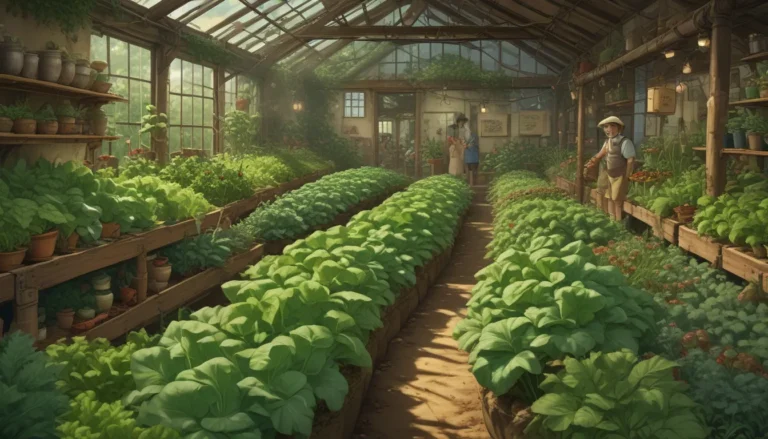Comprehensive Guide to Growing and Caring for Grape Ivy Houseplants

Have you ever admired the look of ivy climbing a stone wall? While it might not be practical to recreate that look at home with English ivy, grape ivy (Cissus alata) offers a beautiful alternative. This tropical vine, also known as Venezuela treebine, features dark green, lobed leaves and a trailing habit that makes it a spectacular addition to any indoor space. Whether you are an experienced gardener or just starting out, grape ivy is an ideal houseplant that is easy to grow and maintain.
What Is Grape Ivy?
Grape ivy, native to the tropics of North and South America, is a member of the grape family, Vitaceae. Despite its name, it is not a true ivy and is related to plants such as the common grape and Virginia creeper. The plant features trifoliolate leaves, meaning each leaf is composed of three separate leaflets. Its former name, C. rhombifolia, was reclassified as C. alata, with “alata” referring to the winged appearance of the leaflets.
With its lush foliage and trailing vines, grape ivy is a popular houseplant that can thrive indoors with the right care. It is non-toxic to humans and pets, making it a safe choice for households with furry friends. When grown indoors, grape ivy prefers temperatures between 65 and 80°F and thrives in moderate to indirect light.
Propagation
Grape ivy is typically propagated through stem cuttings rather than seeds. To propagate grape ivy, select a healthy six-inch section of vine with at least two to three sets of leaves. Trim the cutting at a 45-degree angle just above a leaf node and remove the leaves from the bottom two inches of the stem. Root the cutting in water or soil, ensuring bright, indirect sunlight for optimal growth.
Once the cutting has developed roots, transplant it into a well-draining potting mix in a container with drainage holes. Keep the plant watered and provide indirect light to promote healthy growth. Grape ivy cuttings can easily be shared with friends and family, making it a great gift for fellow plant enthusiasts.
How to Grow Grape Ivy
To grow grape ivy successfully, provide a well-draining potting mix with a pH of 5.5 to 6.2. Place the plant in an area with four to six hours of indirect light per day, and maintain humidity levels between 30 and 60 percent. Water the plant weekly, allowing the top two inches of soil to dry out between waterings. Fertilize the plant annually in the spring with a balanced houseplant fertilizer to encourage healthy growth.
Prune grape ivy as needed to control its size and appearance, promoting airflow to prevent disease. Repot the plant every two years to ensure optimal growth conditions and prevent rootbound growth. Consider selecting specific cultivars such as ‘Ellen Danica’ or ‘Mandiana’ for unique leaf shapes and growth habits.
Managing Pests and Disease
While grape ivy is relatively pest and disease-resistant, common issues such as spider mites, mealybugs, powdery mildew, leaf spot, and stem rot can occur. Monitor the plant regularly for signs of infestation or disease and take steps to address them promptly. Treat pest infestations with organic solutions like neem oil or miticides, and use copper fungicide to manage fungal diseases. Proper watering, pruning, and maintenance practices can help prevent significant pest and disease problems.
Best Uses for Grape Ivy
Grape ivy can be used in a variety of ways to enhance indoor spaces. Consider growing grape ivy in hanging baskets, pots with trellises, or as a room divider using multiple plants. Select containers with self-watering features and trellises to support the vine’s growth and create a unique decorative element in your home. Grape ivy can also be placed on bookshelves or other elevated surfaces to showcase its trailing tendrils and lush foliage.
With its versatile nature and low maintenance requirements, grape ivy is an excellent choice for both beginner and seasoned gardeners looking to add a touch of greenery to their indoor spaces. Explore different cultivars and propagation methods to personalize your grape ivy collection and enjoy the beauty of this tropical vine in your home.
Bring the Tropics Indoors
No matter where you live, you can create a tropical oasis inside your home by growing grape ivy. Share your experiences and questions about growing and caring for grape ivy in the comments below. And for more information on graceful houseplants, check out our guides on pothos, prayer plants, and hoya plants.
Remember, transforming your living space with plants doesn’t have to be complicated. With the right care and attention, grape ivy can thrive and bring a touch of the tropics into your home. Happy planting!





